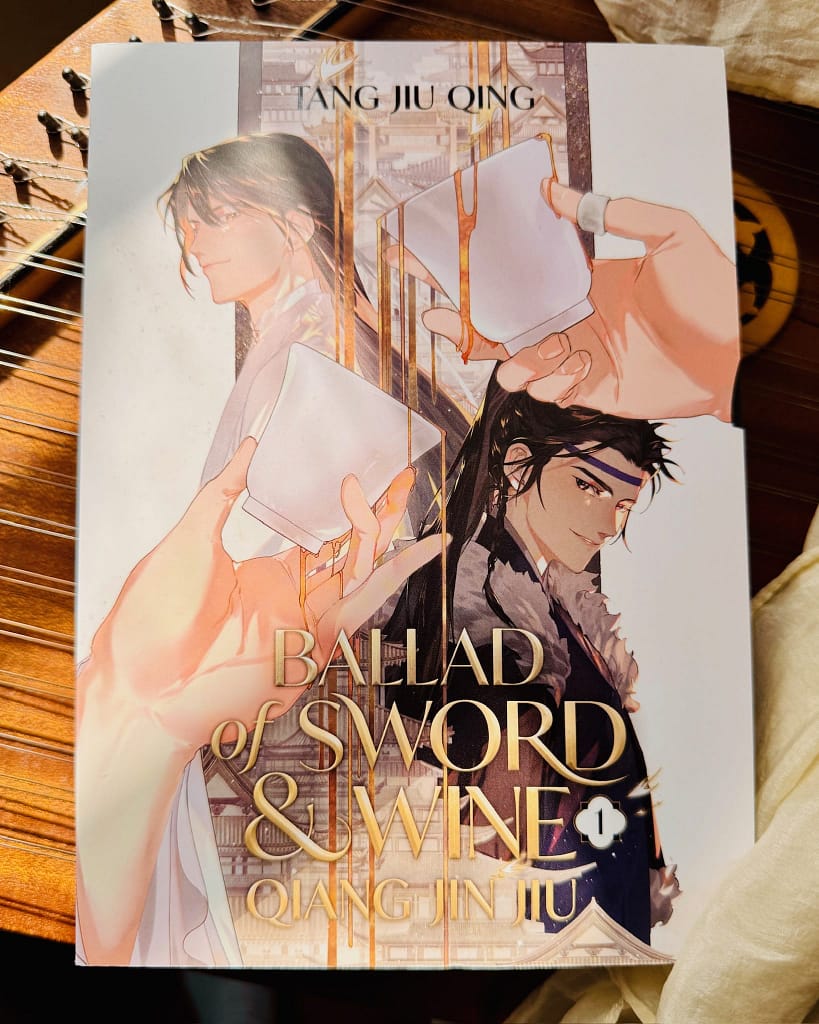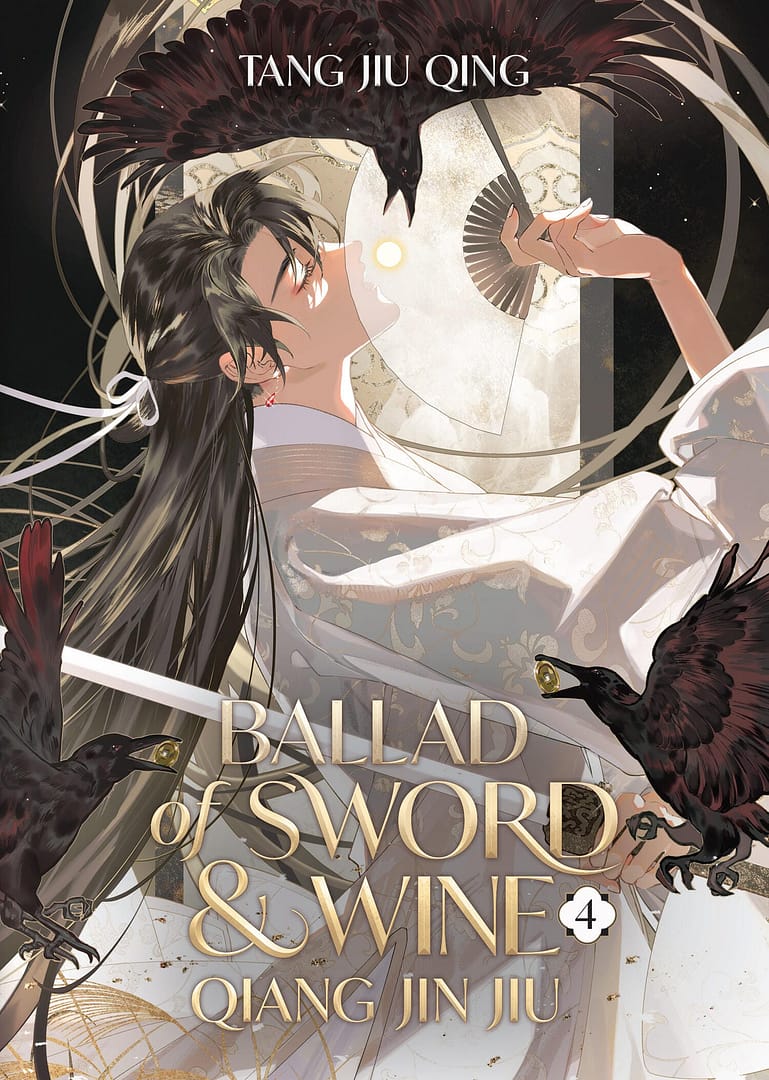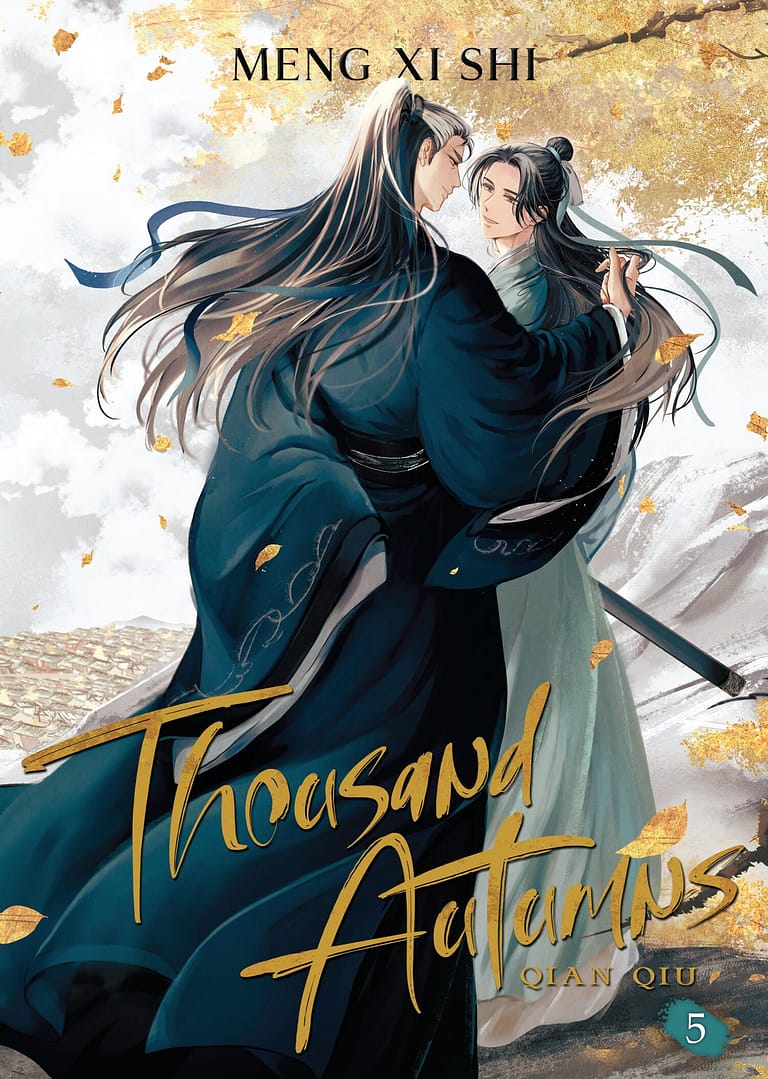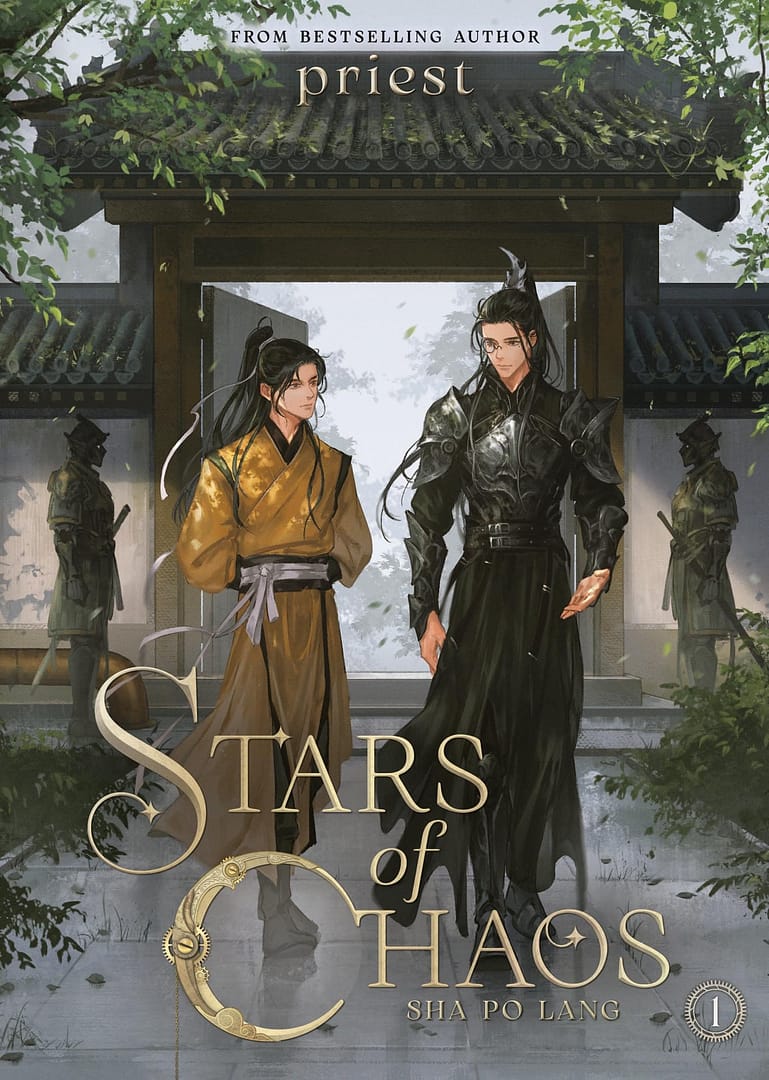Ballad of Sword and Wine (Qiang Jin Jiu) Danmei Novel Review
This is a review for Ballad of Sword and Wine (Qiang Jin Jiu or 将进酒) by Tang Jiuqing (唐酒卿). This novel is available licensed in English from Seven Seas currently up through volume 3 (with volume 4 set to release in May) of a planned 8 volumes total. The books can be bought through the Danmei Dreams affiliate bookshop.org link or anywhere you can buy Seven Seas novels. I did originally read a fan translated version by Lianyin, which was removed from distribution once the English license was announced.
The summary of the book from the publisher is:

In this historical tale of war and political intrigue, an intense relationship burns between the son of an infamous traitor and the vengeful nobleman who despises him…at first.
Shen Zechuan is the eighth son of the traitorous Prince of Jianxing, a man who doomed his cities and people to destruction at the hands of the foreign enemy. As the only surviving member of his reviled line, Shen Zechuan is dragged to the capital in chains. He bears the hatred of the nation, but no one’s hate burns hotter than that of Xiao Chiye, the youngest son of the powerful Prince of Libei.
Xiao Chiye would love nothing more than to see Shen Zechuan dead–but against all odds, he clings to life. Rather than succumb to his family’s disgrace, he becomes a thorn in Xiao Chiye’s side, clawing his way into the cutthroat political world of the capital. Yet as these two bitter enemies beat against the bonds of their fate, they find themselves kindred spirits, unlikely allies…and perhaps something more.
Please note that all reviews aim to be spoiler-free, while analyses often contain spoilers.
Summary
This is an absolutely stunning historical political danmei novel of truly epic proportions. The main characters are deep and rich and fascinating, and the way their relationship progresses is dramatic, full of intense feelings, and deeply satisfying. My very favorite romances combine significant character growth with romantic development, so the characters grow significantly together. This novel truly nails that trope. The political plot is also complex, mysterious, and fascinating throughout the whole novel, and the host of secondary characters are intriguing and well-rendered in their own terms.
Some readers struggle with the complexities of this book, in part because it is very wide-ranging and a lot to wrap your head around. Also in part because the author uses a very clever narrative device of keeping this plot feeling obfuscated at the beginning, when our leads also find themselves confused by it. As the story progresses and the leads gain greater clarity, the reader likewise finds their understanding expanding.
However, this can make for an awkward beginning. To help out, fans have created some amazing guides. Here’s a character chart and character guide and several maps that I highly recommend.
Romance and Main Characters

Shen Zechuan and Xiao Chiye are resplendent characters, and author Tang Jiuqing truly brings to life these two men. When we meet them, they are both broken and shackled by circumstances beyond their control. They begin as enemies with opposing alliances and goals, but are quickly fascinated by one another’s strength, intelligence, and ambition. As time and circumstances draw them closer together, their attraction to one another is as tangible as their distrust. It makes for a heady read.
The arc of their character growth is long, and it is a pleasure to watch it unfold throughout the story. Without leaning in to spoilers in this review, I will say that one of my only disappointments in this book is that in the final quarter of the story the author intentionally shifts the focus from the rich inner lives of the leads to show the impact they’re having on others around them. It’s a testament to how much I loved these characters that this shift away from Shen Zechuan and Xiao Chiye left me longing for more of them as the story concludes.
Secondary Characters
The secondary characters in this story often have deep lives, emotional needs, values, and goals. We see many of them grow and change in a way that feels organically tied to the setting. This includes antagonist characters, and is one of the true strengths of this story—there are few true villains, but rather a host of characters acting in ways that make sense for them but are at odds with others. This empathetic window into the antagonists creates a believably epic adventure.
Naturally not every single character is treated with the same depth. The narrative intentionally shifts focus to different characters to advance the plot, and for the most part this works incredibly well. That being said, there were a few characters that I thought deserved more consideration. Shen Zechuan’s mentor is one example. He appears early in a critical role but seems to lose depth as the story progresses. At one point I wondered if some late-novel critical plot point might find him at the center again, but instead he faded into the background. These instances are minor compared to the many characters that grow with the narrative, but did detract a little from my enjoyment from time to time.
Plot
The plot in Ballad of Sword and Wine is a masterclass in complex politics. The author notes that they have simplified some elements to tell a more cohesive tale, but that’s hard to believe. This story considers everything from the economics of currency exchange to the distribution of grain during natural disasters to the power dynamics between men and women in the court. As I said above, true villains are rare, but conflicts are not. The way this vast canvas of characters come together, sometimes in concert and sometimes at odds, is elegantly delivered.
To repeat what I said above, some readers do struggle with the complexities of this book, especially at the beginning. Know that you’re along for a tremendous ride. But also don’t hesitate to use all of the helpful guides fans have created: character chart and character guide and several maps.
Worldbuilding
In many ways this novel reminds me of a thoroughly detailed fantasy novel in which all of the elements of world building hang together even when unseen by the reader. The geography and map of the world impacts the economics, which impacts public opinion, which impacts politics, which impacts the political map, etc. Though it’s obscure at first, these connections become more clear over time, which makes the world feel cohesive, whole, complex, and thorough. This is a political historical novel, though, not xianxia, so there is no magic involved. Only hard work and hard luck.
I’ve read historical danmei novels that suffer from a kind of tunnel vision, where a part of the world only feels in-focus and fully rendered when it’s directly in the view of the plot. That’s not the case at all for Ballad of Sword and Wine, which feels fully thought through from the first page.
Writing Style & Translation
I did originally read a fan translated version by Lianyin, which was removed from distribution once the English license was announced. I have re-read the first two novels published by Seven Seas as well so have some basis for comparison.
For the most part, the fan translation is truly a work of art, but the Seven Seas translation by XiA, Jia, and amixy makes for a wonderful read as well. I may write a blog post later comparing the two, because there are some stylistic differences that make an interesting study in the art of translation. With a couple of very minor exceptions, the fan translation reads to me as slightly more poetic, with more allusions and suggestions between the lines. The Seven Seas translation is a more direct, which did help provide some additional clarity in the early chapters.
Overall they’re both delightful to read and you can’t go wrong no matter which one you pick up. If you do read a fan translation, though, please don’t forget to support the author too.
Spice Level

4 peppers. This book has plenty of on-page intimacy described in delightful detail. It can be a fun read after the frustration of a priest novel (looking at you Stars of Chaos!). There are many scenes throughout the novels, and the passion and intensity (as well as animosity in the earlier scenes) is truly delicious. If you don’t mind spoilers through the first book, check out my blog post on Lust and Longing in The Ballad of Sword and Wine. If you don’t mind spoilers at all (or to bookmark and follow along as you read), this is an amazing breakdown of every sex scene in the book.
That being said, Shen Zechuan and Xiao Chiye are not explicitly kinky and don’t do anything taboo beyond having hot sex anytime they can get their hands on each other. You’ll need to look elsewhere for more boundary pushing, but believe me—it’s hot and heavy and very much worth the read.







